> Internal Networks
Telepathy Meets Technology in the Dream Pod
“…the body exists in space and time and that, through its interaction with the environment, its defines the parameters within which the cogitating mind can arrive at ‘certainties’, which not coincidentally almost never include the fundamental homologies generating the boundaries of thought…. for conscious thought becomes an epiphenomenon corresponding to the phenomenal base the body provides … embodiment creates context by forging connections between instantiated action and environmental conditions … emphaz[ing] the importance of context to human cognition” (“How We Became Post-Human”, Katherine Hayles , pg 203).
> Videos
Introduction to the project 2003
Dream pod construction 2003
> Gallery Name

Internal Networks MA research 
Dream Pod 2003 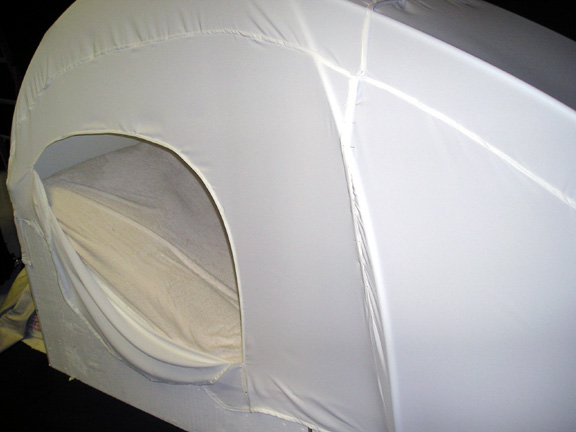
Dream Pod 2003 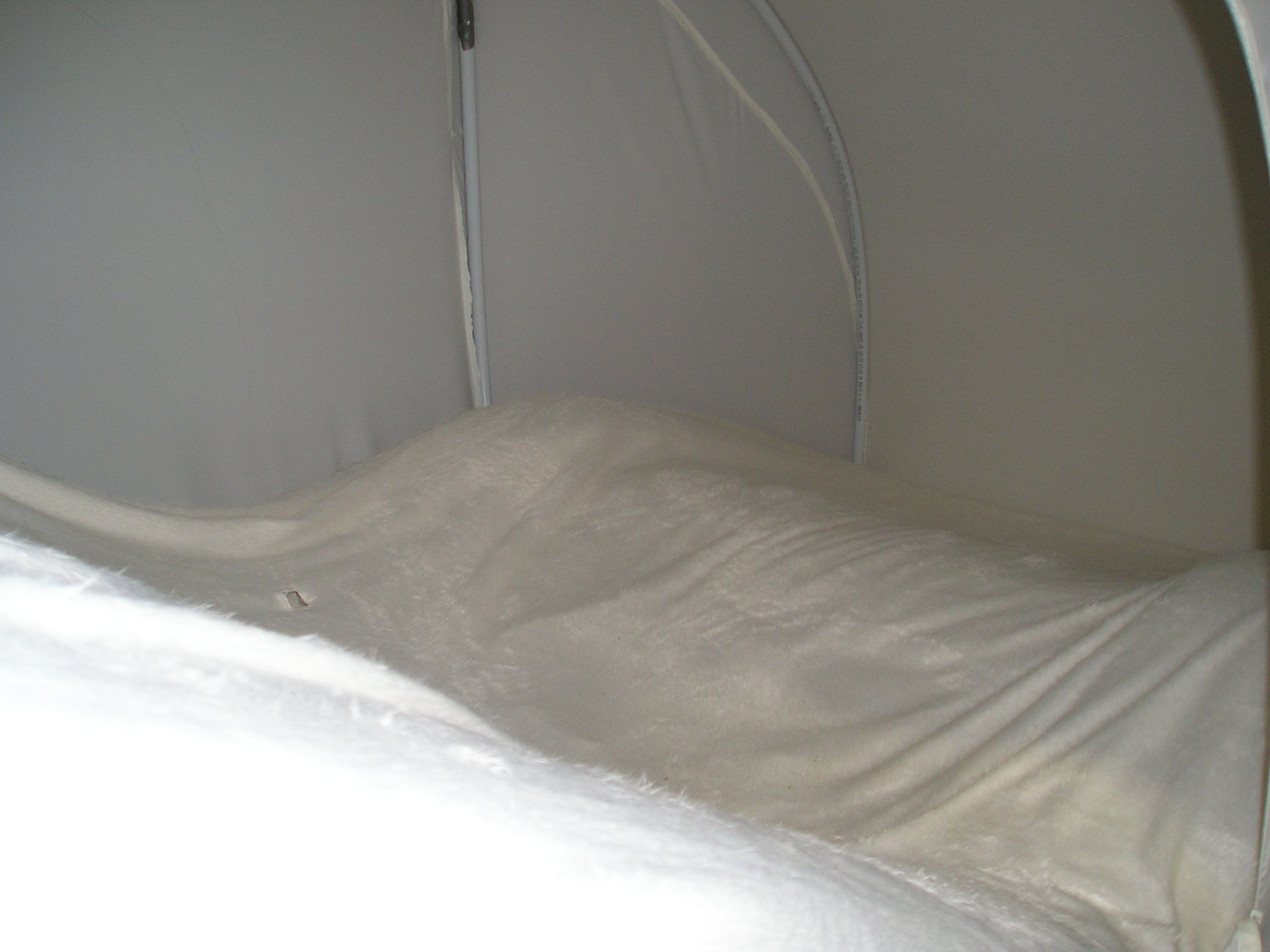
inside the pod 2003 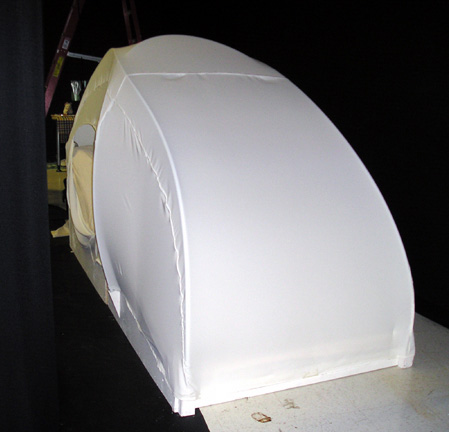
outside the pod 2003 
The physiological sensors 2003 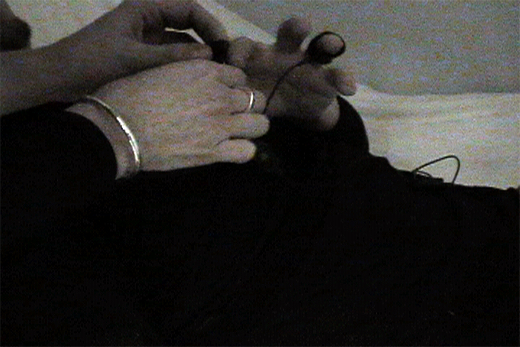
Putting on the biosensors 2003 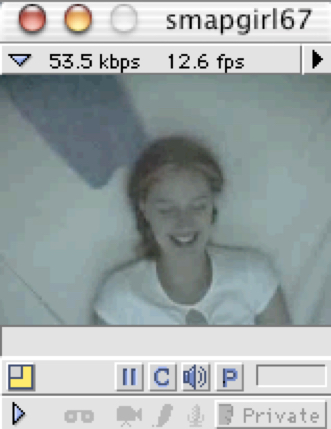
Participant inside the pod 2003 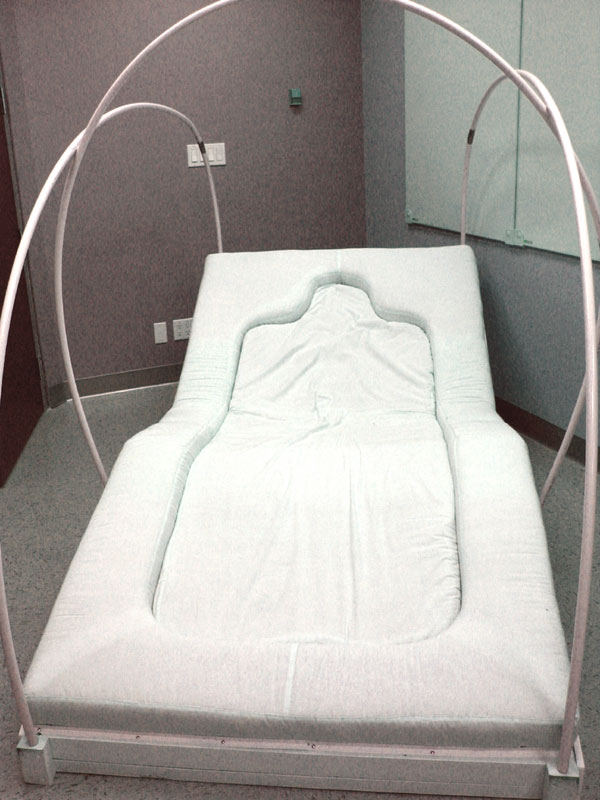
Pod in construction 2003
> Timeline
September 2001 – April 2004
> Collaborators
- Martin Larsen – Pod Construction
> Abstract
My Masters of Applied Science, Interactive Arts research project was a combined interactive art installation and experience design experiment, which explored methods of creating rich sensorial and consciousnesses experiences digitally. I investigated the cognitive strategies of augmentation and transformation with an emphasis on quantum physics and embodiment. I was dealing with the speculative concept of initiating a mind/body to computer meld or communication interaction, consciousness interface. I was pushing at the boundaries of scientific thought regarding human versus computer capabilities and the potential for these capabilities to work in tandem, attempting to take the revelations (of the time) in physics, psychology and neuroscience, and couple them with concepts in human computer interaction (HCI) and developments in wireless communication technologies, using interactive installation techniques, to envision experimental means of connecting humans to technology through sleep telepathy. The aim was to experiment and alter the way we communicate and interact with technology within the Dream Pod.
The interactive experience design project comprises of two elements: The first creates full body experience of altered consciousness. The second takes interactors into the womb-like space to experience audio, visual, tactile and perhaps olfactory stimulation (and lack thereof) within the space. These combine to create an experience, where the interactor engages through his/her own reactions to the sensor-audio-visual-smell stimulation and their responses are recorded.
Research Questions
Since humans can telepathically communicate or connect through natural “wireless” communication already, all we need do is encourage and train others to take advantage of this possibilities, but first we need convice the scientific community and public that this a viable way to go, and answer the following questions:
a) can technology (i.e. sensors, and responsive environments) facilitate that natural affinity?
b) can humans eventually communicate telepathically and interact with computers and technology
Sensory Stimulation / Deprivation
The theory I based my ideas upon were concepts around sensory deprivation, but also from therapists interviewed and research into various forms of meditation, visualisation and guided imagery techniques uncovered during the research. I discovered that some stimulation put the mind into relaxation, through a guided approach using dream-like imagery and experiential design. However, too much stimulation over stimulate and prevent the participant from going into the desired altered state of consciousness experience of hypnogogia or pre-post-sleep state.
Mind/Body Quieting Techniques & Research
I was incorporating techniques to induce altered states of consciousness, inner-awareness, and the physical manifestations of these, in order to prepare participants for external “wireless” communication, and to create a “meditative portal” or “non-local telephone” for “connection” for each to enter and find each other telepathically and eventually through technology.
The experimental immersive environmental design for this “portal” or “non-local phone” was to include a comfortable environment and to include a pre-experience physical preparation before individuals entered the Dream Pod environment, using light yoga, breathing and guided relaxation techniques to stimulate physical sensations of weightlessness, hyper-awareness, and openness.
In order to get a better idea of the best ways to help participants to be open up to this experience and to access this “connection” or “portal” to the telepathic dimension, I conducted mind-quieting approaches from various practices locally and from other cultures around the world.
I began by experimenting with altered states and mind quieting practices on myself, and available locally such as: Hypnotherapy, Mindfulness Meditation, Visualisation techniques, Shamanic Dance, Holotropic Breathing, lucid dreaming exploration, and Sweat Lodge techniques. I borrowed from these to develop my own techniques for the project experiences I created for the Dream Pod.
> Partners
- Simon Fraser University, Surrey, Canada
> Budget / Funding
2001 Minerva Foundation Award for Women in Graduate Studies for the 2001-2002 school year ($1000 CDN BC Canada)
2002 TechBC Award for Academic Excellence, based upon the academic year 2001-2002 ($2000 CDN BC Canada)
2002 TechBC Award for University Service Scholarship, based upon the academic year 2001- 2002 ($1000 CDN BC Canada)
> Outcomes / Impact
Papers, conference and exhibitions:
Baker, C. (Nov 2004) “Telepathy Through Biosensor Media Stimulation”, published in Consciousness Reframed 2004: Qi and Complexity Conference Proceedings, Planetary Collegium, Beijing, China. Available for download from: http://chni.ca/cami/Qi&Complexity_CamilleBaker.doc
Baker, C. (Oct 2005) “Transcendence through the Artifice of Spectacle: Martin Beauregard’s ‘Fireworks’”, art review published in new brunt magazine, by the grunt gallery, Vancouver. Available for download from: http://www.eciad.bc.ca/~camib/MartinBeauregard.doc
Baker, C. (Sept 2004) “Biosensor and Media Art Induced Meditation and Telepathy”, LEA Special Issue: From the Extraordinary to the Uncanny: The Persistence of a Parallel Universe, Guest Editor: Michael Punt, published in The Leonardo Electronic Almanac, MITPress – e-journals – LEONARDO http://leoalmanac.org/journal/Vol_12/. Available for download from: http://leoalmanac.org/journal/Vol_12/LEAWrdIndex2004.pdf or http://leoalmanac.org/journal/Vol_12/lea_v12_n11.txt
Baker, C. (July 2005) “’Discovering Telepathy Through Altered States’, The Altered States: transformations of perception, place, and performance”, published in Conference Proceedings, Planetary Collegium, Plymouth, UK. Available for download from: http://chni.ca/cami/Altered_CBaker.pdf
Baker, C. (March 24, 2004) – “Internal Networks: Telepathy Meets Technology in the Dream Pod”, SFU SIAT -Thesis Defense, Simon Fraser University, Surrey Campus, Burnaby, BC, Canada.
Baker, C. (May 2003) “Internal Networks : Telepathy Revisited”, Digital Arts Conference in Melbourne, Australia.
- Caladan Gallery Exhibition (now closed permanently) in 200